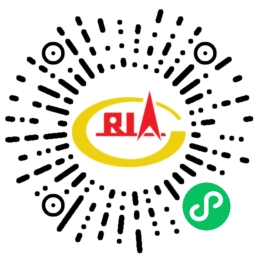On August 26, CRIA Rubber Materials Professional Committee held the “2016 Rubber Materials Market Forum & General Meeting of CRIA Rubber Materials Professional Committee” in Kunming. The present representatives made in-depth discussions about the focus issues in front of the rubber materials industry, including sluggish market demand, low price, surging import of mixed rubber and high tariff of NR. Everyone thought that the rubber price fluctuated at a low level basically and there was limited room for continuous decrease. At the dawn of the market, as long as they persist, they will surely see the first light of morning. Nearly 130 representatives in industry attended this meeting.
Xu Wenying, the secretary-general of CRIA, introduced the matters concerned by enterprises such as NR tariff and anti-dumping and anti-subsidy against Chinese truck and passenger car tires by the USA. She said, this year, the import of mixed rubber increased greatly due to the high tariff of NR and modification of the compound rubber standard. Recently, some relevant associations published the Self-discipline Regulations on General Technologies of Mixed Rubber; however, the customs may not refer to this standard immediately since this standard is only in the scope of self-discipline. CRIA has prepared for submitting a report about reducing the NR tariff and establishing the Chinese NR industry support fund to relevant ministries and commissions of the state, and called on the upstream and downstream enterprises to strengthen the cooperation, communication and mutual understanding, establish NR industry fund, and support the healthy development of the domestic NR industry. She indicated that in the long run, the reduction of NR tariff not only makes for solving the import problems of compound rubber and mixed rubber, but also facilitates the healthy development of the Chinese tire industry.
According to the preliminary ruling result of the “anti-dumping and anti-subsidy” against Chinese truck and passenger car tires by the USA, Xu Wenying pointed out that the export of domestic truck and passenger car tires would be greatly influenced. The Chinese tire industry is in unprecedented hard times. However, this year, preponderant brand enterprises are faced with relatively better conditions. Besides, compared with the tire industry, domestic rubber products industry is better, for example, such enterprises as Zhongding Holding and Times New Material are ranking top in the world, because they focus on high-end products and also purchase international famous enterprises at the same time.
Li Shengcheng, the deputy general manager of Yunnan State Farms Trade Co., Ltd., introduced the cur- rent development status of the NR industry in Yunnan and the countermeasures in the current market. In 2015, the total planting area of NR was about 8.66 million mu in Yunnan, and the production area was 4.59 million mu; the output of dry glue was about 440,000 tons, and the average yield was 100kg/mu. The planting area of NR in Yunnan accounted for about 50% of that in China, the production area accounted for about 43% of that in China, the output of dry glue accounted for about 56% of that in China, and the average yield was nearly 30% higher than that in China. Affected by the domestic and overseas economic environment and the sluggish de- mand in the downstream industry, the rubber price has fluctuated at a low level all the time. At present, the price of NR per mu is less than RMB 1,000 Yuan, and rubber farmers suffer from a great setback in rubber tapping enthusiasm so that the replanting and non-reaping situation is very serious, the output is declining and the activity in production is reduced sharply.
Mo Yeyong, a researcher of Chinese Academy of Tropical Agricultural Sciences, introduced the current situation of NR in Hainan. The planting area of NR in Hainan is 8.13 million mu, and the production capacity is increasing gradually, in which private rubber is the driving force of the growth. Though the planting area is increasing, the output is decreasing, which is mainly caused by the continuous downturn of NR price, forcing rubber farmers to give up producing NR and making a new living. At present, the annual production capacity of NR in Hainan is 460,000 tons~470,000 tons, and the highest may reach 500,000 tons. However, whether the production capacity can be realized lies on market price and intensity of the industrial structure adjustment of the government.
Yunnan Alternative Development Association introduced the overseas replacement planting situation of NR. After years of development, the overseas NR replacement planting of China has acquired gratifying achievements. The replacement planting region is mainly located in the northern part of Laos and Myanmar. The NR planting area in these two regions totally covers more than 2 million mu. The NR planted before 2010 has been tapped, and rubber has been transported to China basically. However, there are many enterprises don’t tap rubber considering the low price of NR at present. They are anticipating an appropriate price.
SR taking a large part of rubber consumption carried on last year’s production situation in this year. Yang Xiuxia, an expert of Sinopec Economics & Development Research Institute, introduced the current situation of SR in the first half year of 2016 and the development prediction in the latter half of the year. The average operation rate of SR enterprises in the first half year was about 55%, and the price rose slightly on year-on-year basis. Considering the abundant supply of NR and the price downturn, the anticipated demand of SR won’t increase in a large scale.
Li Shiqiang, the general manager of Sri Trang Agro-Industry Plc., introduced the development and prediction of the international NR. The suppression on low price of rubber starting from 2014 comes into effect, making the price fluctuation reaches its bottom. Rubber industry is under the process of survival of the fittest. Although the overall supply of main global rubber producing countries is still increasing, the growing rate keeps slowing down in successive years. Currently, the surplus range of NR is narrowing obviously. Such countries as North Thailand, Vietnam, Laos, Cambodia and Burma are still in an increasing situation but with low growing rate. Thailand has new intensive planting areas in the northeast part but the single yield across the country is obviously decreasing, which offsets the increase of the tapping area. The manpower shortage of rubber plantation influences the capacity release. Affected by elements like weather, so far, the shortage of rubber glue and rubber sheet has still not been completely relieved since the tapping period. What’s more, from the view of execution potency, the execution of export reduction plan from March to August announced by the ANRPC didn’t make an effective intervention. Both increase and decrease in the export of rubber producing countries appeared until July. From the view of rubber consumption, the consumption growth of NR in countries like Thailand, Indonesia and Vietnam increased rapidly. The growth of Chinese NR consumption slowed down due to the accelerating speed of building plants abroad of Chinese tire enterprises.
Wang Yiqing, the associate professor of Beijing University of Chemical Technology, introduced wet rubber mixing technology. Limited by conditions, dry glue is usually produced by liquid glue in the production of Chinese NR. He suggested that enterprises with proper conditions may cooperate with tire enterprises in oriented services to improve the additional value of products using wet rubber mixing process.
Lyu Qinghua from Shanghai Futures Exchange introduced the transaction situation of NR in this year, mentioning they are promoting the entrance of No. 20 glue positively.
Shen Bo, the general manager of Thailand Huatai Gum Co., Ltd., introduced the situation of raw materials in Thailand. Basically, the price of raw materials of NR in Thailand has reached its bottom, especially rubber smoked sheet. The rubber tapping period in this year is reduced due to the climate and other factors, leading to a predicted decline of output.
Wang Wenyong, the general manager of Yunnan Xishuangbanna Shunda Import & Export Trading Co., Ltd., introduced the production status of NR in Xishuangbanna in this year. The annual rubber tapping date of NR in Xishuangbanna almost starts from March 20. Due to the climate factor, the rubber tapping was postponed for over 20 days. Later, the overmuch rain which occasionally continued for a few days affected the rubber tapping, leading to a decline of 20,000 to 30,000 tons of predicted output. Affected by the low price of rubber, rubber farmers only earn about RMB 70 Yuan per day from rubber tapping. Thus they turn to better jobs with higher income. What’s more, there is a critical shortage in rubber tappers because post-80s and post-90s are basically unwilling to take up this job.
It is also acknowledged that the domestic material inventory of rubber is almost running out. The inventory in Qingdao Free Trade Zone is getting used up quickly, which has currently declined to under 150,000 tons. Now, the NR inventory in Qingdao bonded warehouse is basically “zombie rubber”.
In addition, CRIA Rubber Materials Professional Committee held a new election for president with Yunnan State Farms Trade Co., Ltd. as its president unit and Chen Yunyuan, the chairman, as the president of the 9th Rubber Materials Professional Committee.




